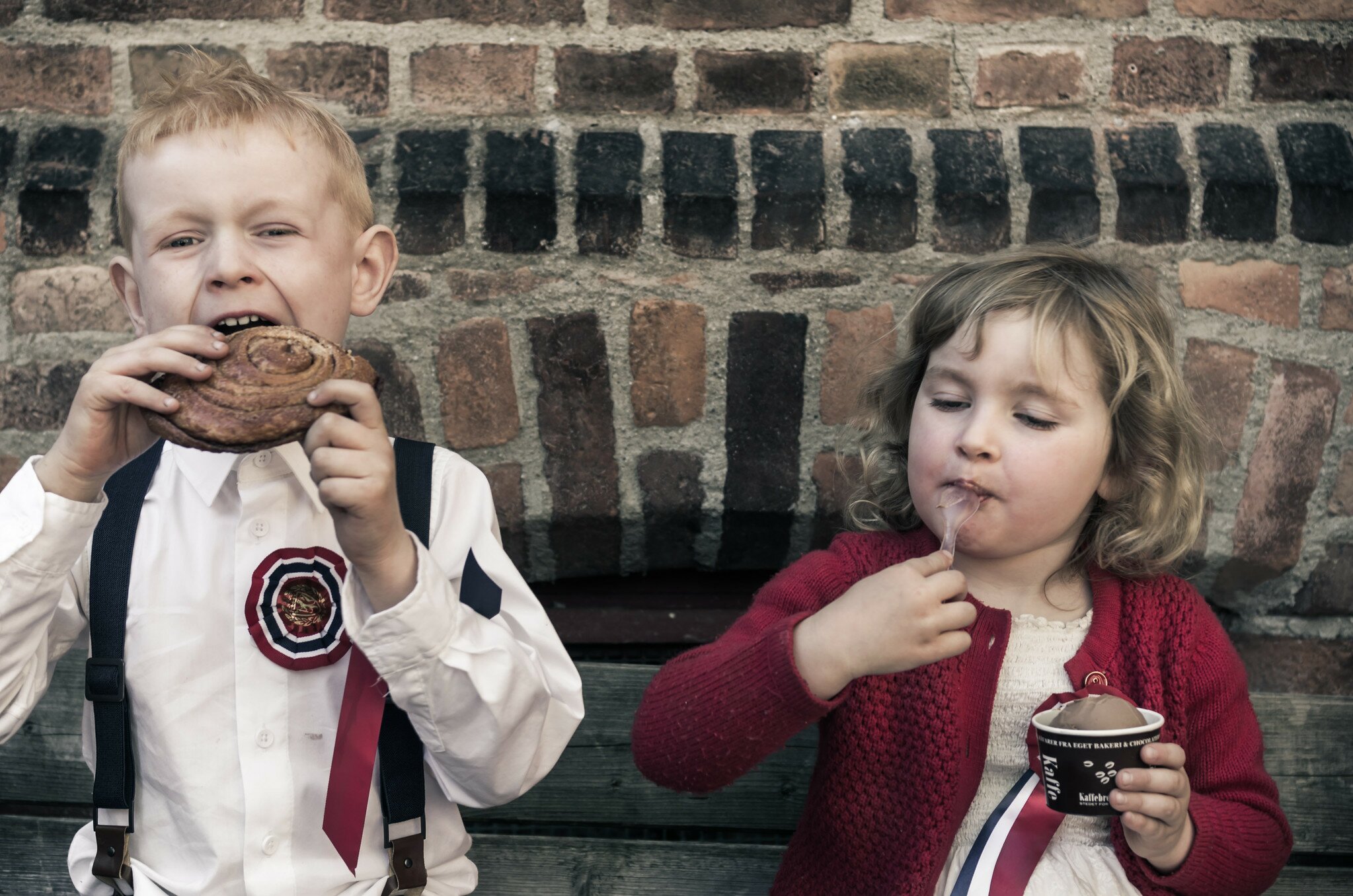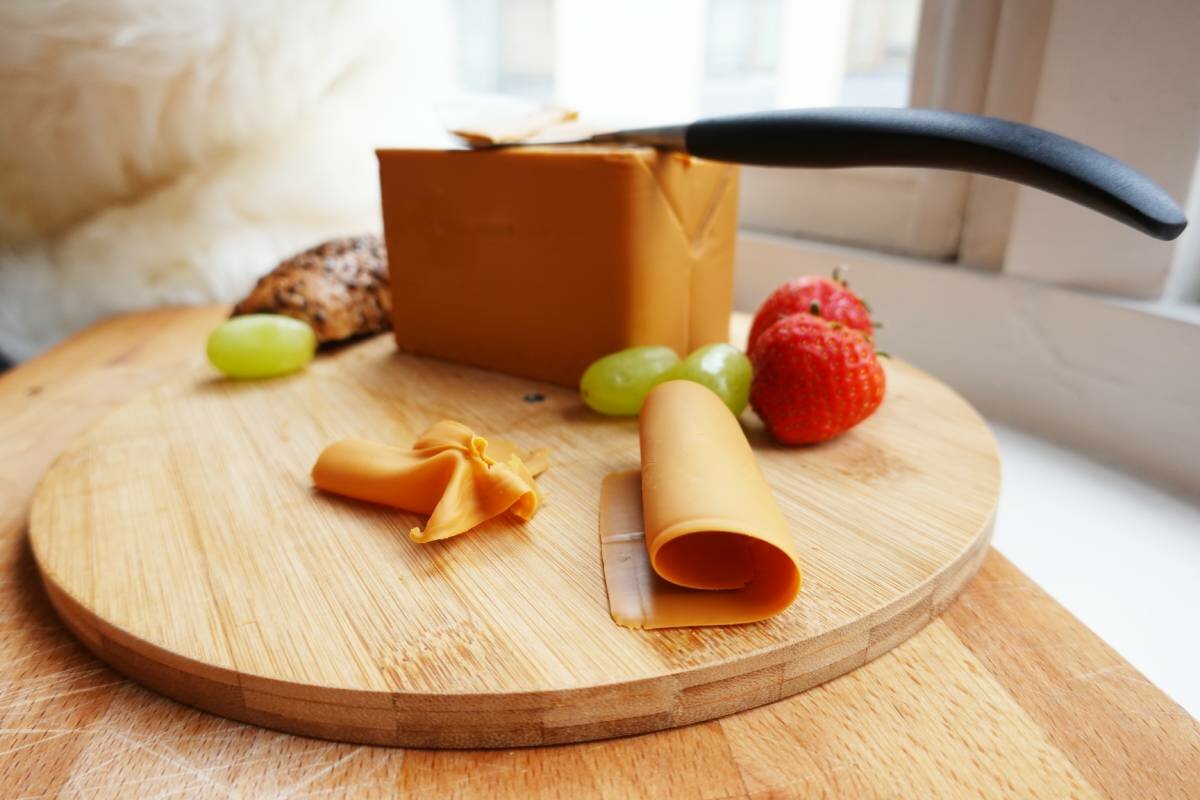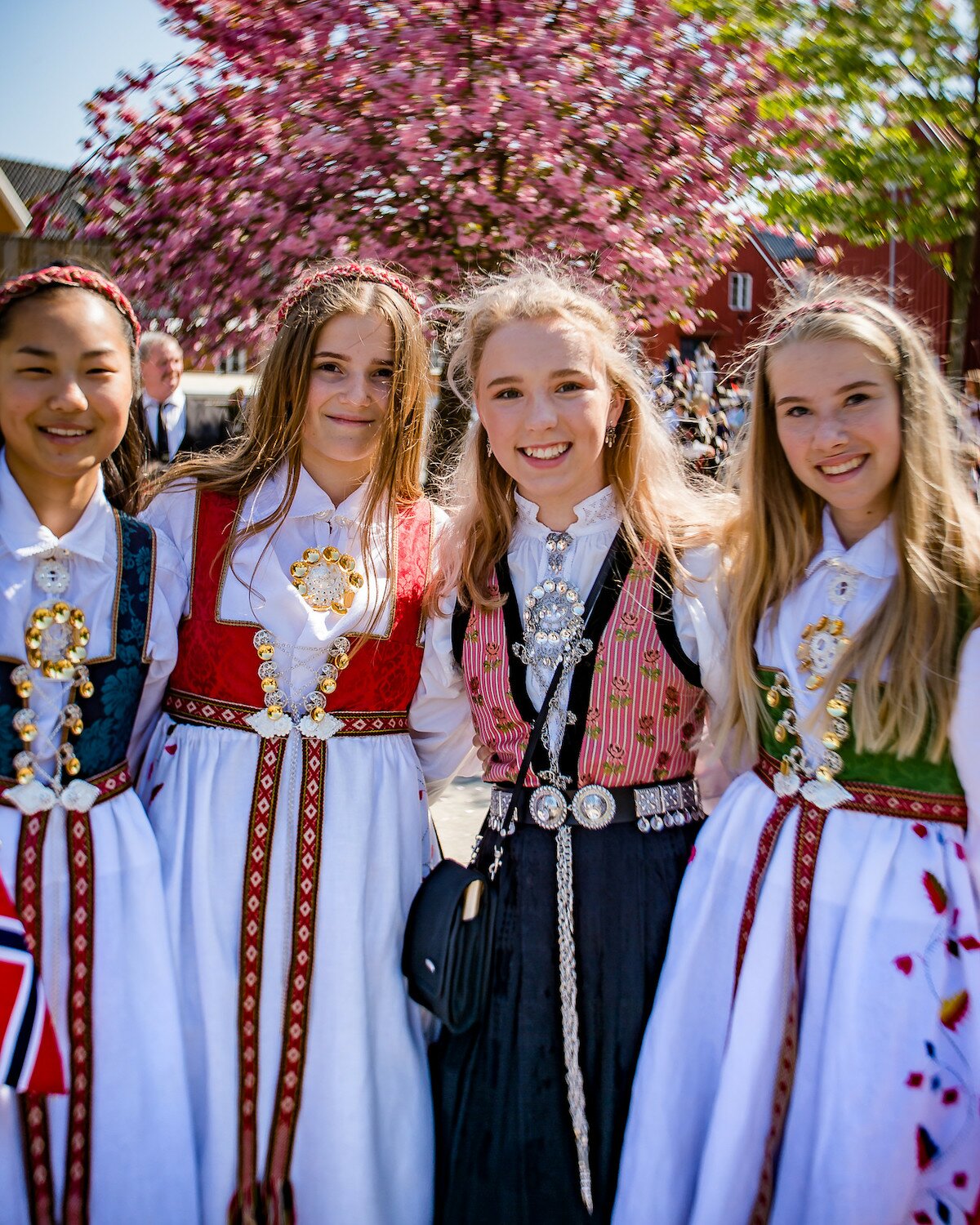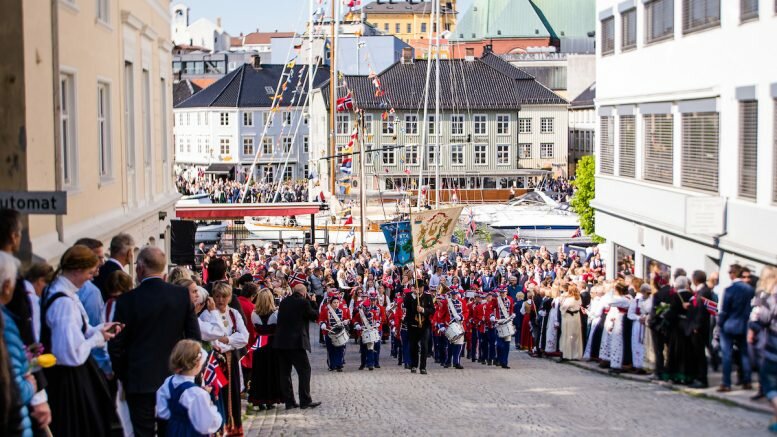We’re covering a number of Norwegian customs, their stories, and how to navigate them if you’re not Norwegian.
Customs are social phenomena. They’re everywhere, whether we notice them or not. Customs aren’t just “obvious” traditions such as religious fasting – they include gestures as small as shaking hands, bowing, nodding, and so on.
Customs by no means apply to each community and culture in Norway or beyond – they’re not universal.
Read on for our list of some of the most interesting customs in Norway, in random order.
1. Going all-out for Constitution Day
One of the most important holidays in Norway is Constitution Day. The country celebrates the signing of its constitution over 200 years ago, which consequently resulted in its independence, on May 17 each year.
The day is marked by parades, parties, and customs aplenty.
Traditionally, May 17 begins with a friend-and-family champagne breakfast.
Then, it’s common to get into traditional costume (more on this below!)
Next, it’s time to head down to the town center for the parade (many Norwegian towns have their own, though the capital’s is the biggest), where schoolchildren take the stage first.
In Oslo, part of the parade takes place at the Royal Palace in front of the Norwegian Royal family.

Post-parade, families venture back to their homes and happily relax, drink, and eat the rest of the day away. Customarily, Norwegian food such as flatbread, dried meats, and milk porridge are consumed, while more modern dishes include hot-dog sausages, popsicles, cake, and waffles.
Beer and aquavit remain boozy favorites for the day.
Read all about Constitution Day and the history behind it here.
2. Buying alcohol from the government
Buying alcohol in bars, clubs, and restaurants is no problem (although it can be quite pricey) in Norway.
However, if you wish to buy it for home consumption, you’ll have to buy it from a government-run liquor store.
Called Vinmonopolet, these shops close early in the evening on Saturdays and aren’t open Sundays. Oenophiles can check out Norway Today’s sommelier-designated white wine and red wine Vinmonopolet recommendations.
Nowadays, supermarkets are also allowed to sell certain beers (those under 5% alcohol per volume), but sales for alcohol stop before the rest of the supermarket closes down.
Speaking of drinking, it’s usually reserved for the weekends, when Norwegians aren’t afraid to let a little loose.
Find our guide to the costs of living in Norway, including alcohol, here.
3. Munching on brown cheese and waffles
You might already be familiar with the Norwegian delicacy of brown cheese, or brunost.
The “cheese” is sometimes called the country’s national cheese – but it actually isn’t a cheese, technically.
Brunost’s unique production process, which consists of boiling cow or goat milk until it caramelizes, leads to a gooey consistency and a sweet and salty taste – which many find difficult to compare to any other food they’ve tried.

While the “cheese” itself has been around since before the current era, waffles topped with brunost are a much more modern reimagining.
The meal can be eaten for breakfast, as a snack, or during teatime. Indulging in the cheese is one of Norway’s most quintessential foodie experiences.
4. Not introducing friends and aquaintances
If you don’t live in Norway or aren’t familiar with Norwegian customs, chances are you’ll be confused when two Norwegians who know each other begin chatting without introducing you.
However, keep in mind that the action (or lack thereof) is not meant to offend you!
Rather, Norwegians don’t wish to come off as forcing themselves or a new situation on a person. In other words, they don’t want to embarrass you or make you uncomfortable – empathy lies behind this custom.
What’s polite – or impolite – in one culture doesn’t have to be in another.
5. Appreciating personal space in public
Personal space is highly valued in Norway, especially in public areas.
Don’t be surprised if, at a bus stop, coffee shop, or grocery store, people are about an arm’s length apart (pre-corona times included).
Even when around family and friends, personal space is taken into consideration and there can be little to no touching during conversations – i.e. pats on the back and hugs.
One of the best places you can experience this Norwegian social phenomenon is when using public transportation.
You might notice passengers only sitting next to or across from another person if there are no other seats available.
A possible explanation? Norway is ranked as the second least densely populated country in Europe – meaning Norwegians are used to, and love, their personal space. Another potential reason is the same as that of #4 – no one wants to make another person uncomfortable.
6. Enjoying Scandinavian art
Arts and crafts have been widespread throughout Norway since historic times thanks to both ancient Sami and Viking traditions.
Partially as a result of years of making art across Norway, multiple schools of design are open and successful in the country.
Norway regularly exports high-quality furniture, textiles, jewelry, and similar materials, which often reflect the country’s rich heritage.
Rosemaling, for example, is a Scandinavian art form widely practiced in Norway. This folk art process involves using primary and secondary colors to paint objects and materials with floral design and geometric elements. Folk high schools (folkehøgskoler) offer classes in rosemaling, among other crafts.
7. Feasting during Christmastime
Jul, which means Christmas in Norwegian, is defined by royalty-worthy feasts.
Seven different kinds of sweet treats, in particular, shine during Christmas in Norway.
As with many Norwegian food traditions, the types of pastries and cakes prepared range from region to region, but common ones include pepperkaker (gingerbread cookies), goro (Christmas waffles/cookies), sirupsnipper (syrup snaps), sandkake (sweet sand cakes), berlinerkranser (“Berlin” butter cookies), ingefærnøtter (ginger nuts), and smultringer (donut rings).
The sweet treats may be prepared and perfected on Lille Julaften (Little Christmas Eve), which occurs on December 23. This eve of Christmas Eve is often celebrated by eating rice porridge.
Contrary to other Christian countries, the main celebration in Norway takes place on December 24. After Christmas Eve dinner, families enjoy the delicious desserts, play games, open presents, and sing carols.
God jul! (Merry Christmas!)
8. Acclimating to the cold from a – very – young age
Infants in Norway might be taken outside by their parents for multiple hours, even when it’s very cold out and/or during the winter.
This Scandinavian tradition arose out of the need for babies to get fresh air and to help get them used to the harsh northern winters, which can include sub-zero temperatures.
Other benefits of infants sleeping outside for multiple hours are thought to include better sleep quality, increased energy, and adaptation to sleeping in different kinds of environments, even those that are loud and bright.
9. Enjoying ancient folklore and myths
Folklore has been passed down in Norway for centuries.
Many traditional stories include tales of trolls, giants, monsters, and other supernatural beings.
Viking mythology is a key part of myths still told in Norway today.
But it’s not limited to just Norway – Norse mythology has influenced pop culture worldwide; for example, through works such as J.R.R. Tolkien’s Lord of the Rings, games like The Elder Scrolls V: Skyrim, and more.
10. Celebrating Easter
Sami Easter festivities include a range of commemoration activities, including reindeer races and traditional joik songs.
Other Easter customs in Norway include – you probably wouldn’t guess this one – reading a detective novel or watching a crime show or movie with the family.
After food has been eaten and served, everyone settles down and enjoys a few fictional thrills.
Another common Easter tradition is taking advantage of the time off work and heading into nature for an extra-long hike.
11. Dressing in the national costume
In times bygone, many Norwegians had two bunader, one for special occasions and one for everyday life.

While the everyday wear of the national costume has faded out, a big investment in the bunad still exists.
Much of the population spends up to 50,000 NOK on the beautiful costumes, which include many intricate details.
For women, the woven wool skirts or dresses, complete with jackets and scarves, are often accessorized with colorful purses and shoes. For men, an embroidered three-piece suit is usually worn.
Today, Norwegian traditional dress bunader are most often worn on Constitution Day.
12. Spending time outdoors
Hiking and skiing are a key part of Norwegian customs – and perhaps even the national identity.
Holidays are most often thought of as opportunities for spending time in nature.
Weekends, too. Sundays and Saturdays can often be spent practicing outdoor activities – which often last all day in true Norwegian style.

13. Partying before exams
Graduating high school students in Norway often kick off a month-long celebration at the end of April.
Called russefeiring, the festivities can include rented buses – or rather, party buses.
Colorful costumes are worn by students during this period (and sometimes, not washed for good luck during the entire month!)
Russefeiring culminates on Constitution Day when students can take part in the parade – if they’re not too tired.
Source: Norway Today



Be the first to comment on "13 uniquely Norwegian customs"